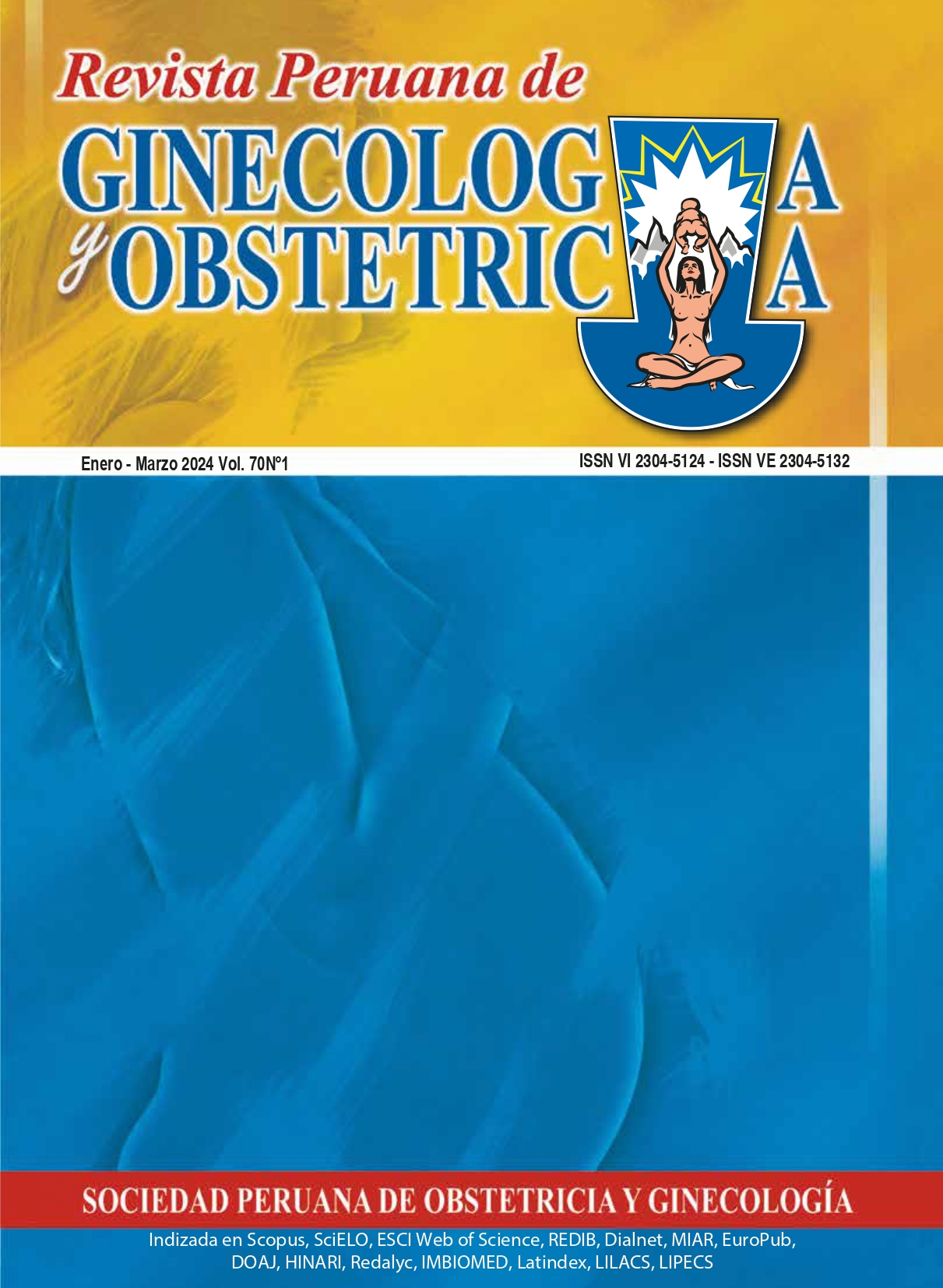Intrauterine growth restriction according to Peruvian customized curves: validation and diagnostic accuracy study
DOI:
https://doi.org/10.31403/rpgo.v70i2593Keywords:
Perinatal care, Fetal growth retardation, Fetal development, Ultrasonography, prenatal, Fetal research, Perinatal mortalityAbstract
Introduction: There is no consensus on the growth curve to be used to assess fetal
growth. Objectives: To validate customized curves and study their performance
in the detection of neonates with intrauterine growth restriction (IUGR), as well
as their diagnostic accuracy. Methods: Initially, customized curves were designed
with 2,792 singleton fetuses from low-risk pregnancies; the optimal weight at 40
weeks = 1,496.202 + (64.379 x fetal sex) + (831.362 x maternal length) + (9.567 x
pregestational weight) was calculated and combined with a standard proportionality
function to adjust the weights according to gestational age. Subsequently, its
performance was evaluated by applying it in a retrospective cohort of neonates aged
24–40 weeks born between 2018-2022 in a tertiary hospital in Lima-Peru. Twins and
congenital anomalies were excluded. Results: A total of 6,598 neonates were studied.
Customized curves showed good agreement with INTERGROWTH-21 (IG21) (kappa
= 0.68; 95%CI = 0.62-0.74). They detected 2.8% of IUGR (184/6,598), similar to the
3.1% for IG21 (205/6,598). They showed high specificity and negative positive value
(NPV) (97% and 98%; 95%CI = 97-98% and 98-99%, respectively). The risk for perinatal
death (RR = 7.2; 95%CI = 4.6-11) and accuracy (96; 95%CI = 95-96%) were higher than
those of the Fetal Medicine Foundation (FMF) (RR=3.6; 95%CI = 2.5-5.2 and accuracy=
89%; 95%CI = 88-89%, respectively). Conclusion: The customized Peruvian curves
were reliable in assessing IUGR. Their detection capacity and diagnostic accuracy
were similar to other international curves, although somewhat higher than those of
the FMF.
Downloads
Downloads
Published
How to Cite
Issue
Section
License
Copyright (c) 2024 Oswaldo Tipiani-Rodríguez, Yuliana Libet Bocanegra-Becerra, Cristopher Huarag-Chavarry, Kristtel Figueroa-Morales, Miguel Ángel Ponciano- Biaggi

This work is licensed under a Creative Commons Attribution 4.0 International License.
Esta revista provee acceso libre inmediato a su contenido bajo el principio de que hacer disponible gratuitamente la investigación al publico, lo cual fomenta un mayor intercambio de conocimiento global.















